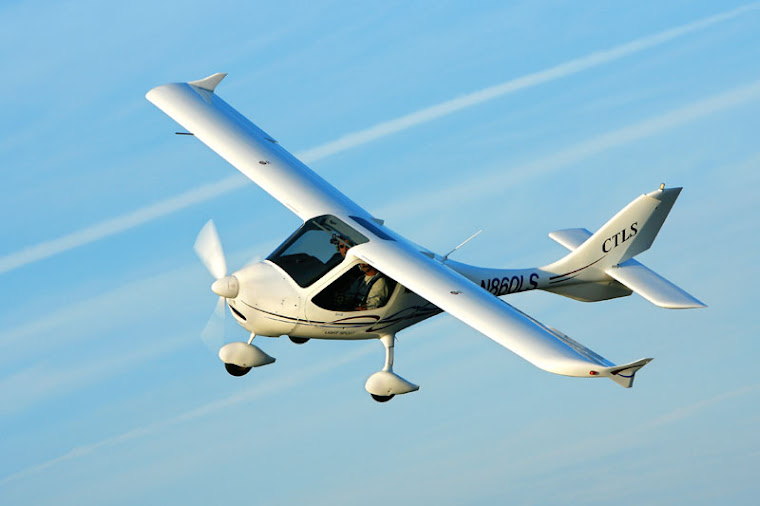Yes, the wealthy (or “monied” people) certainly can afford a private pilot’s license (or other advanced rating for that matter) – let alone a conventional single-engine piston aircraft like a Cessna 350, Cirrus SR22 or Diamond DA50 – thoroughly embracing GA flying and the unique sense of freedom it brings. And they certainly can afford to buy luxury cars and live in expensive homes, too. We welcome their contribution to consumerism! And it’s probably fair to say they comprise the likes of successful industry leaders, business owners, celebrities and other "monied" people. However, the assumption is that this market uses GA aircraft primarily for transportation rather than recreation – visiting clients, attending important meetings or events, operating multiple business locations, and more – facilitating business-related uses. They buy their aircraft based on a desire for flying and, ultimately, business demands. Therefore, primary use is business-related vs. pleasure-related. Pleasure use is likely secondary – vacationing, weekend getaways, etc. – but not necessarily recreational in the truest sense. Again, this market is ideally suited for conventional single-engine piston aircraft.
• Flying around the ranch, lake, ocean, airpark or airport
• Flying airport-to-airport for a bite to eat
• Flying to a remote landing spot and enjoying an afternoon picnic
• Shooting landings (both on land and in water)
• Taking in the sights or flying in formation
• Exploring remote locations or geography and satisfying the adventurer spirit
• Doing fly-ins (i.e. camping, fishing, hiking, etc)
• Engaging in short “air rover” flights for fun – while at the same time maintaining proficiency
So, business use is not a factor, and transportation use is likely secondary – such as occasional visits to see friends or family – but limited by payload, fuel costs and other fees. Furthermore, LSA product does not necessarily require sophistication - especially since night flying, instrument flying, and long cross-country flying are either prohibited or limited in scope. So, this market is ideally suited for the Sport Pilot certificate and LSA product offering.
Again, the middle-aged baby-boomer segment is a huge market – ranging in age from 45 to 60. They are not “monied” people, but rather “common” people with discretionary income – wage earners and small business owners desiring to learn to fly and fulfill their passion for aviation at mid-life. This segment comprises both net-new aviators who were unable to obtain a private pilot’s license when they were younger, and active/inactive aviators such as:
• Inactive, retired professional pilots (i.e. military, commercial, corporate, etc) – who still need a flying fix!
• Inactive, frustrated GA pilots – who desire re-currency but have been sidelined by life distractions and high costs for years
• Active, high-end, advanced ultralight converts
• Active, low-end, private pilot converts – who focus on recreational sport flying and want to minimize overall operating costs due to budget constraints
• Active, advanced computer pilot converts
Another huge and untapped market is the youth segment ranging in age from 16 to 29. Based on GAMA-FAA stats, this group represents the largest group of student pilots among all age groups. In fact, the number of student pilots falls off dramatically after age 29 – most likely due to affordability issues. This “Generation Y” segment is vital to the future of GA. We need to get this segment hooked on flying, and sticking with it! Growth in this segment will help meet future demand for pilots in GA – such as corporate and charter pilots. Likewise, it will help meet future demand for pilots in other professional roles – such as commercial and military pilots. The key question is – how can we get this “Gen Y” segment excited about GA and flying? Through proactive outreach! More on this in a later blog.
Probably the largest untapped market today exists within the traditional US powersports market which is approximately 60 times the size of the US piston-engine personal aircraft market, according to The Aircraft Partnership Association. According to the APA, in order to penetrate this broader market, it is critical that the average purchase price of light sport aircraft be reduced to a range of $5,000 to $50,000 - as the vast majority of new powersports vehicle purchases typically fall within this price range, the apparent "sweet spot" for sales to this broader market. In other words, the primary barrier to entry (for personal aircraft manufacturers) into the $44+ billion powersports market is the unit price or acquisition cost of aircraft, according to the APA. Unless this barrier is overcome, GA will remain stuck chasing a shrinking and aging market niche. More on this in a later blog.







No comments:
Post a Comment